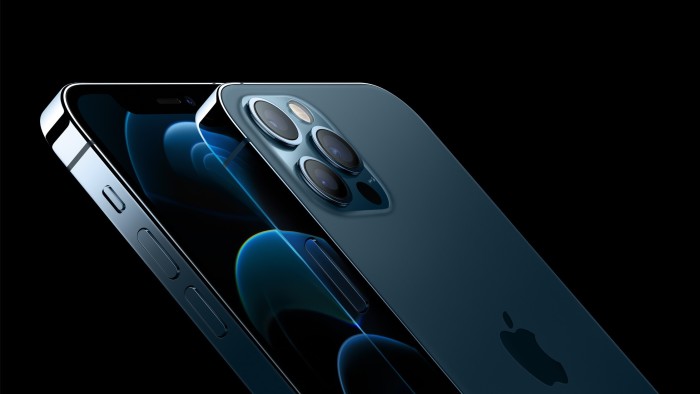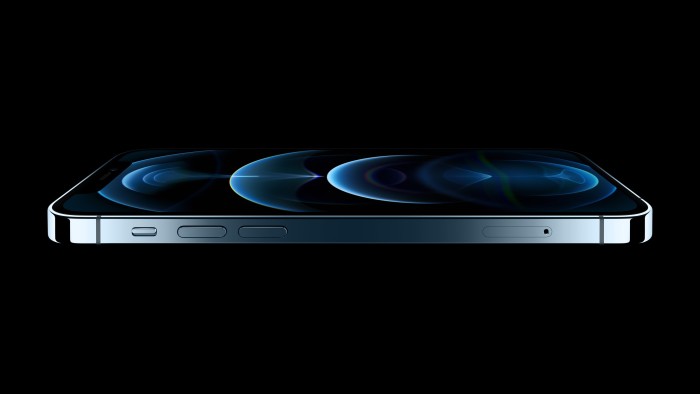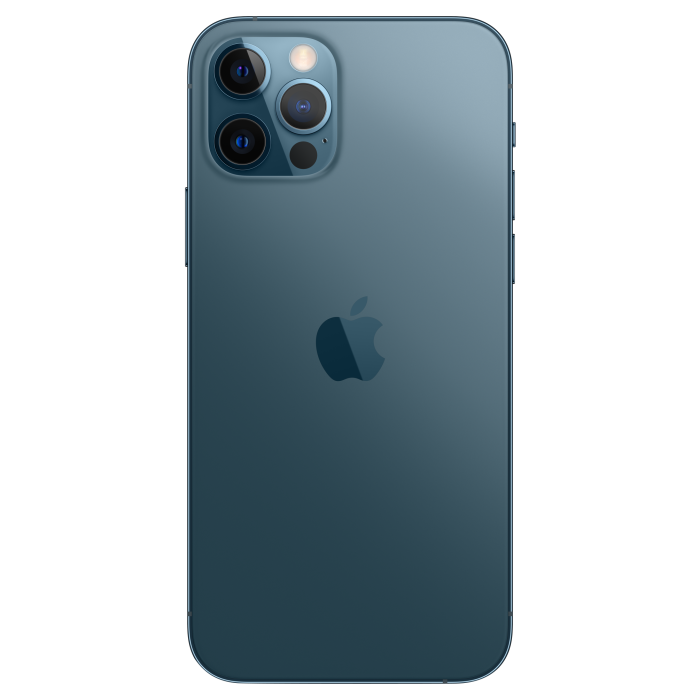How good is the new iPhone 12?

Roula Khalaf, Editor of the FT, selects her favourite stories in this weekly newsletter.
After spending 24 hours with the new iPhone, I can report that it’s not quite the giant step for phone-kind Apple says it is (“It’s a leap year” is the advertising slogan), but the 12 family is still very, very good.
I actually trialled the iPhone 12 Pro, which costs £200 more than the standard iPhone 12. For that extra investment you get an optical telephoto lens, an array of different colour options, a stainless-steel rather than aluminium body and a battery that Apple claims lasts a little longer.
Immediately obvious is that the new, fractionally bigger OLED screen is brighter and more colourful than on the iPhone 11; it’s a subtle improvement, but you’ll appreciate it soon enough. What’s not obvious is that, according to Apple, it’s also much harder to break when you drop the phone.
Then you’ll notice that the squared-off-sides design (a reworking of the iPhone 4 body shape from 2010) is exceptionally comfortable in the hand.

But the thing that really hooked me is the 12’s camera array. The actual lenses have undergone a modest upgrade. But the software, which is responsible for probably 70 per cent of the look of the resulting photos, has been drastically improved. The new chip in the iPhone 12 has 11.8 billion transistors. I used to make working radios in the 1970s that had four; a fancier model would have had seven.
Close to 12 billion of the things do a lot of work – 11 trillion operations per second, to be precise. Apple claims that this makes the iPhone 12 more powerful than any other mobile phone. And much of the work done by those 11.8 billion little chip chaps is computationally converting the OK images produced by tiny plastic lenses into wonderful, vibrant, detailed photographs – even those taken in almost total darkness that would defeat many conventional cameras.
There are so many patented processes at work in the iPhone 12 camera that even a geek can go cross-eyed reading about them. The most significant, however, is the greatly upgraded HDR (high dynamic range). By merging multiple but simultaneous images taken at different exposure settings, the camera produces a photo in which the dark parts of the scene are just as clear as the bright parts. That sounds a bit artificial – but it happens to be exactly the way human eyes, with the brain taking the computational role of the phone’s electronics, see things. It was the frustration of old-school cameras, both film and digital, that you had to choose whether to expose for the highlights or the dark bits. Not with these extraordinary pocket cameras.

And when it comes to video, you have a cinematic treat in store. (Go through the camera settings when you get the phone to ensure you’re shooting in 4K at all times. I would recommend choosing 24 frames per second rather than some of the higher frame rates.) Shooting in Dolby Vision, a subtle step up from ordinary 4K HD, you will be able to produce videos almost as good as a professional movie camera. But beware: you’ll need to view these films on a screen capable of showing Dolby Vision. The phone’s is fine, and iPad Pros do it, as can up-to-date MacBooks and iMacs. Best of all, though, is to view them on a reasonably recent TV through an Apple TV box.
There are other, less spectacular, advances in the iPhone 12. Apple’s big thing is that the range is 5G-capable, but this barely matters and I wouldn’t bother getting a 5G SIM for a few years. And many will welcome the introduction of MagSafe charging – a magnetic ring that takes the hit-and-miss out of placing your phone correctly on wireless charging pads – in the iPhone 12 range. I thought I’d love this, but the problem is that it’s quite hard to separate the charger ring from the iPhone – especially when you’re groping around at 3am and need to check something on your phone.
All in all, though, the iPhone 12 is worth the upgrade if you’re currently on anything up to the X. If you have an 11, you’re probably OK for now, unless you’re a photo or video enthusiast. In which case, maybe wait for the 13 next year.
And, yes, I imagine there are meetings going on in Cupertino right now discussing whether calling it the iPhone 13 would be too much like tempting fate.
Comments